Highly Informed Brides Create New Challenges for Designers and Brands
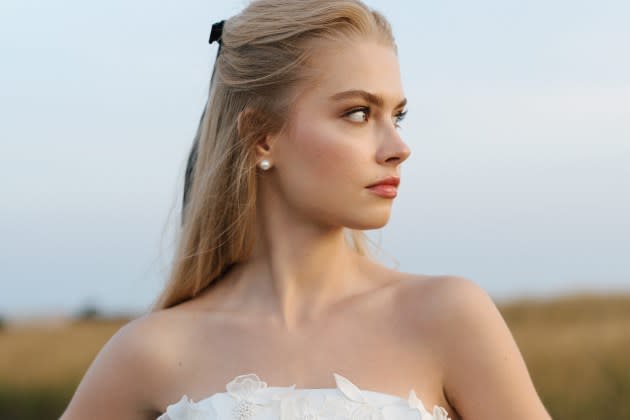
No longer the sure-fire business that it once was, the bridal industry is dealing with more informal weddings, an unsteady economy, interest in vintage dresses and ultra-informed shoppers.
With the New York bridal market approaching, manufacturers and retailers are getting revved up with new tactics.
More from WWD
EXCLUSIVE: Giambattista Valli Is Barcelona Bridal Fashion Week's Next Guest Designer
EXCLUSIVE: Rebecca Vallance Introduces Bridal Accessories Collection
There is a lot of business at stake. Last year’s global bridal gown market was estimated to be $43.5 billion. This year, 2.2 million weddings are expected to be held — a slight decline compared to the 2.4 million weddings that were held last year. Looking ahead, the domestic wedding services industry is expected to hit $70.3 billion by the end of the year.
However, following a post-pandemic boom in weddings in the U.S., the domestic bridal wear market seems to be realigning. Last week, JLM Couture Inc. filed for bankruptcy, due partially to the pandemic, and disputes with a landlord as well as one with one of its former designer Hayley Paige. In addition to that label, JLM produced the Allison Webb and Lazaro labels. JLM, which was founded in 1988, had reduced its team to 21 from 70 in 2020. In a statement issued Oct. 3, the company said it is working on restructuring.
David’s Bridal, the largest national chain for affordable wedding dresses, is trying to regain its footing, too, after its second bankruptcy. In July, the 70-year-old retailer was sold to the Cion Investment Corp., which invested $20 million for new initiatives and has assumed certain bankruptcy-related liabilities. Earlier this year, David’s Bridal closed 100 of its stores, with 195 remaining open.
Despite those struggles, some big-name bridal companies continue to gain attention, including Monique Lhuillier, Pronovias, Vera Wang and Kleinfeld. Meanwhile, many of the often highly informed brides-to-be are opting to buy two dresses or versatile styles for their receptions. They are also increasingly shopping months in advance versus a year ahead. And FOMO applies to wedding dresses, too — with many brides continuing to shop even after finding a dress they love, which can also be problematic for last-minute purchases. Continued interest in destination weddings is also driving sales.
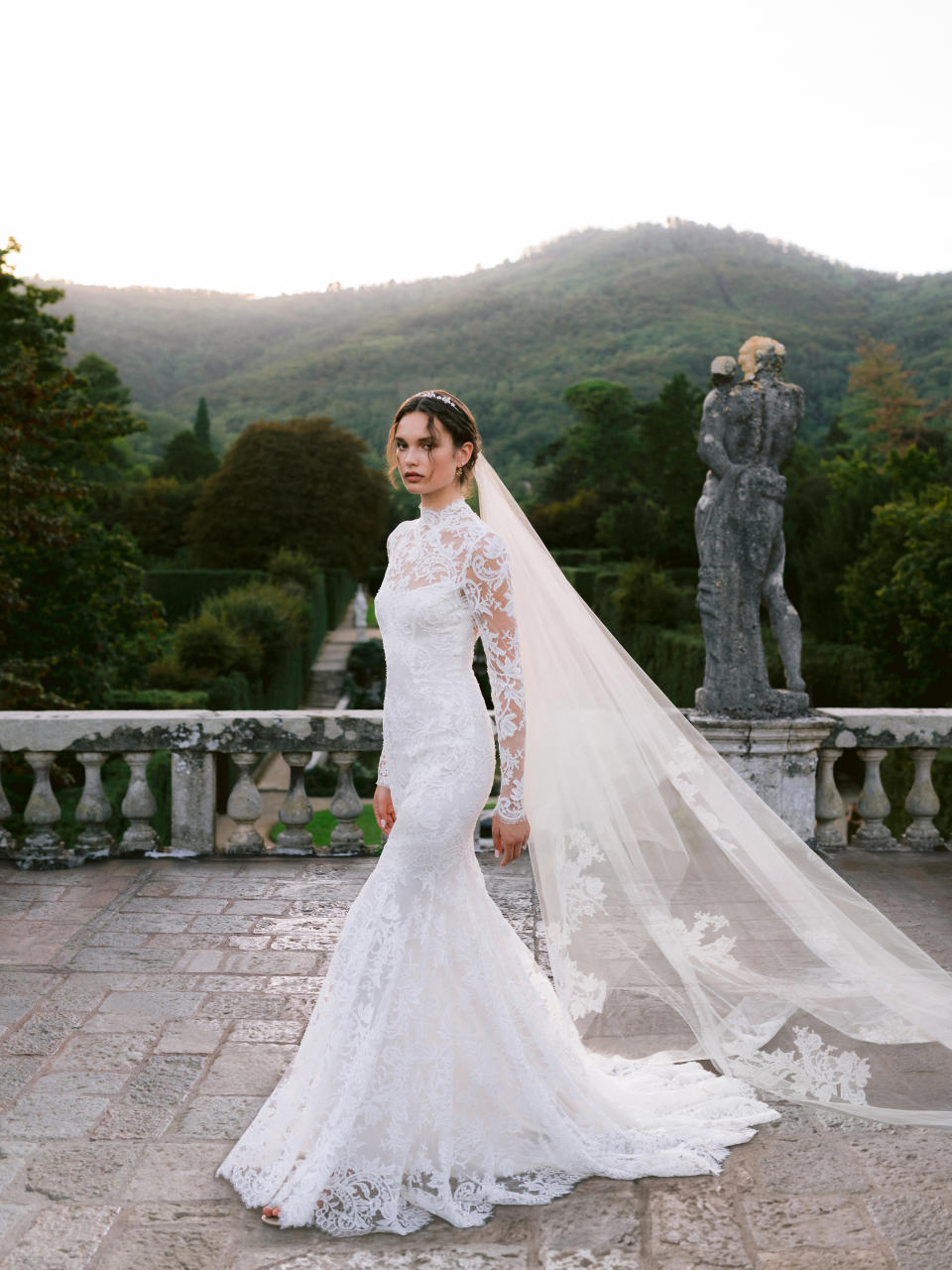
Lhuillier shot her advertising campaign for the second consecutive year in Europe, with an international team of models who were photographed outside of Venice. Brides not only want the dress, but “they want to be the girl in the picture,” the designer said. “The girls can really see the dresses in a dreamlike setting and a lot of times they even book the locations that I shoot in. When I shot in Lake Como, a lot of the locations thanked me because now you cannot even get a spot to get married in for a year.”
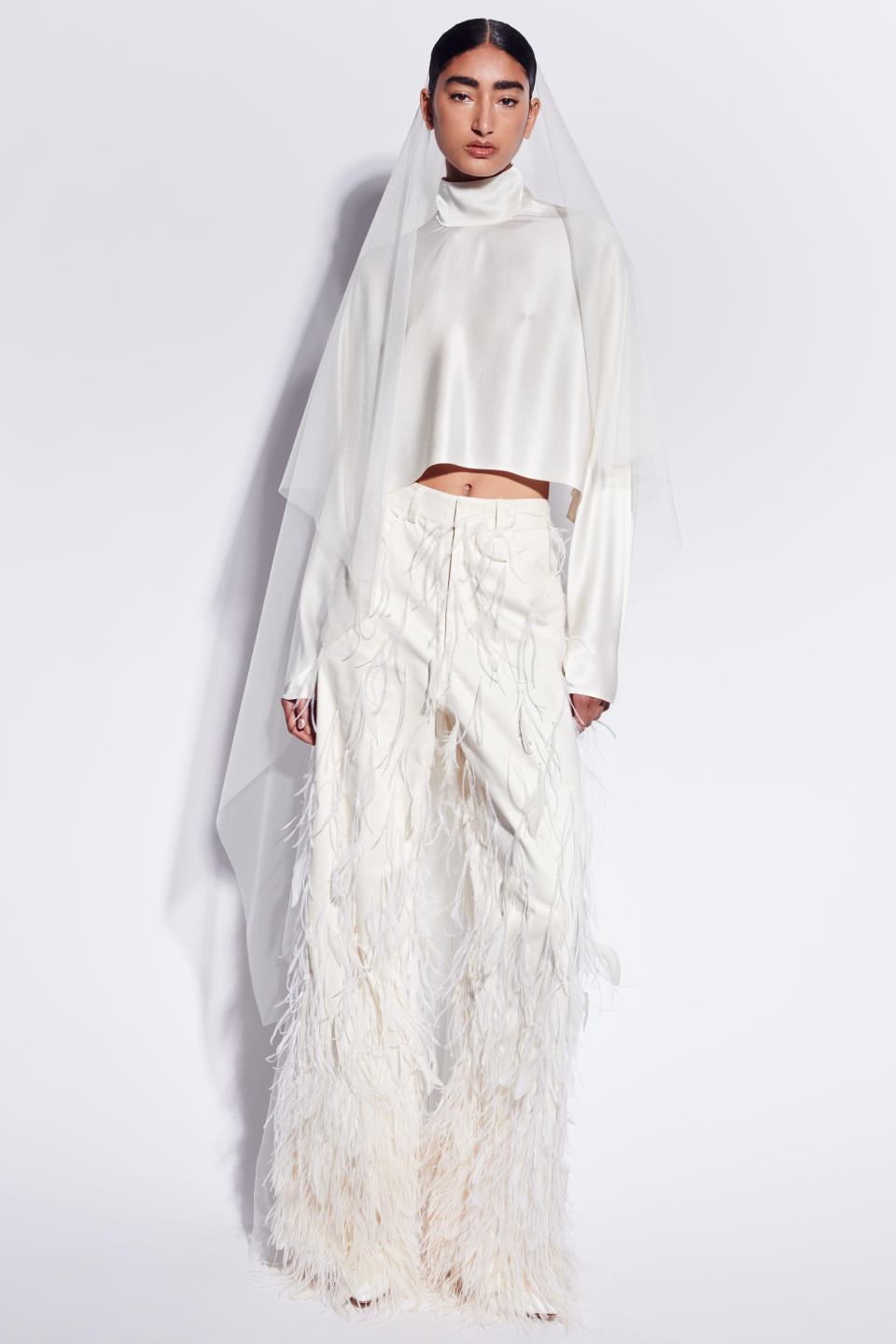
Savvy brides are booking stylists for pre-wedding looks for their engagement parties, bridal showers, rehearsal dinners and weddings. The latter often requires multiple dresses and a going-away outfit, Lhuillier said. “That has really ramped up in the last few seasons. Brides are willing to take more chances. More than ever, they are wearing things in my ready-to-wear collection for their weddings.”
But that doesn’t mean traditional doesn’t have a place, she noted. “Grandiose traditional lace looks with long sleeves and ethereal elegance is here to stay. Even younger girls, who change into more risqué looks, want their wedding dresses to be more elegant,” Lhuillier said, adding that she only shows 80 percent of the collection to give shoppers reason to visit her stores and have a sense of discovery.
In New York, Kleinfeld’s executive vice president Marissa Rubinetti said, “We’re really out of the COVID-19 phase with all of the retailers going full steam ahead to get their businesses back up to pre-COVID-19 times.”
Despite ongoing discussion about the state of the economy, the rise of fast fashion and cheaper prices for ready-to-wear, brides are spending a few hundred dollars more for wedding gowns compared to years past, with the average Kleinfeld dress purchase being $3,000. With Gen Z more interested in experiences than purchasing things, “a wedding is quite possibly the biggest experience in their entire life,” Rubinetti said. At Kleinfeld’s, brides are not shying away from the higher price points, she said.
Anticipating a return to some opulent and over-the-top-fashion this season, she hopes to see some interesting fabrics and silhouettes emerge from the market. Sareh Nouri, Nardos, Halfpenny London and Nicole + Felicia and Pnina Tornai were among the resources that she was eager to see. After last year’s upswing in weddings, Rubinetti said the target is to return to 2019 numbers. “We’re seeing a good indication that that’s starting to level off here to a more normalized base. And 2019 was a very successful year for us,” she said.
There will be some new additions too. Amsale is expected to officially open a freestanding store at 150 Wooster Street later this month. Paris-based Rime Arodaky is debuting a showroom and store at 426 West Broadway. Talyal Bendel will unveil Haas bridal at an Oct. 11 event at the Woolworth Building as part of NYFW Bridal. The Toronto bridal and eveningwear atelier Whyte Couture is debuting the Jaclyn Whyte label with 20 dresses wholesaling from $2,500 to $7,500. The expansion was triggered in part by many of its bespoke clients purchasing two dresses — a more traditional style for the ceremony and shorter, body grazing silk slipdresses for the reception.
Brides are shopping earlier and increasingly taking cues from celebrity nuptials and Instagram and TikTok, according to Shawne Jacobs, owner and creative director of Anne Barge.
Morilee has its own celebration on the docket — a 70th anniversary. The company will mark the occasion with a capsule collection that was inspired by some of the brand’s designs through the years. There will also be a Morilee Madeline Gardner 70th anniversary runway show at Carnegie Hall on Oct. 12. Jenny Yoo will host a runway show on Tuesday at the West Edge event space.
Longtime retailer Mark Ingram will debut his new 7,000-plus square foot space at 515 Madison Avenue. He said, “Brides really are doing their homework. They’re very educated and are also informed by word-of-mouth from friends. They are shopping with a very definitive eye. They know what’s current in fashion and on trend, as well as how to throw a beautiful wedding.”
Stephane Rolland, Elie Saab and Mira Zwillinger are a few bestselling labels for Ingram, who is eager to meet with the teams from Israel-based labels Eisen-Stein and Alon Livne, who managed to travel to New York despite the Israel-Gaza war. “They made it out and will be able to present. I’m excited because they are also personal friends. They are safe, they’re families are safe and they are able to continue with business.” Ingram said
By touting retailer partners via Badgley Mischka Bride’s Instagram and Facebook, the designer label is enhancing engagement between stores and brides, according to Mark Badgley and James Mischka. Now more than ever, sales are driven by online searches and research, a pandemic shutdown-induced trend that has become the norm, they said. With that in mind, stores need to emphasize the service aspect of the gown shipping experience, they added.
“We showcase the boutiques that are carrying Badgley Mischka Bride gowns and present the store, the management and details for location our gowns. This has been producing more engagement between store owners and brides on our social media platforms,” they said.
Having opened a domestic manufacturing facility near its design offices, Anne Barge is now looking to broaden its eveningwear business Stateside and its bridal one in the U.K. and in Europe, according to Shawne Jacobs, owner and creative director. Brides are shopping earlier, reviewing all available options, adding accessories and increasingly taking cues from celebrity nuptials and Instagram and TikTok, she said.
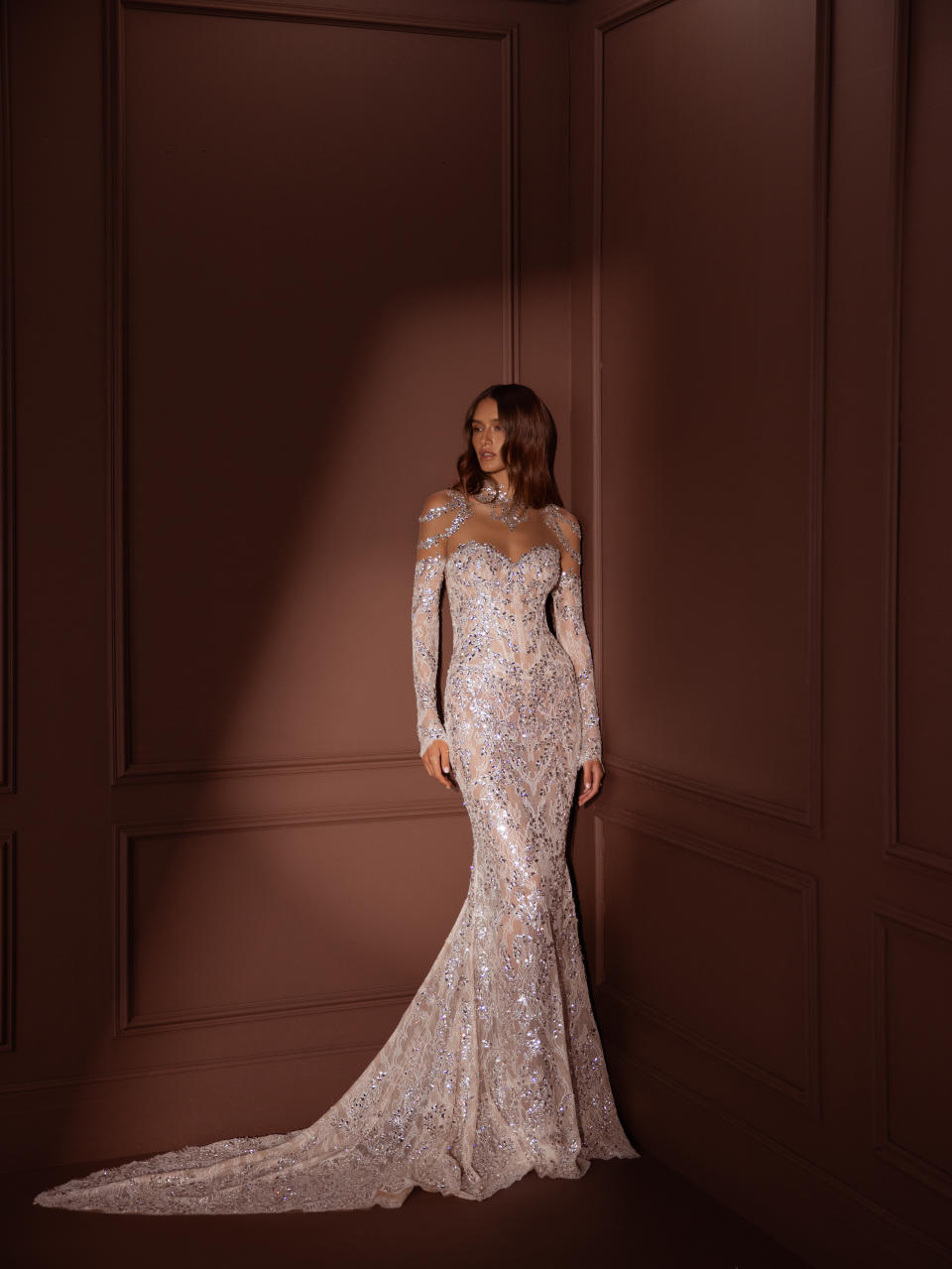
Arava Polak is also branching out with more distribution in the U.S., Asia and Europe. Some of that growth has been sparked by brides looking for clean cuts, princess silhouettes and detachable sleeves, giving a versatile option, according to Arava and Ronen Polak.
The Tel Aviv-based Pnina Tornai is encouraging brides to embrace “anti-trend weddings” with more daring designs. She also is encouraging a new degree of splurging with a made-to-order wedding gown that will carry the hefty price of $100,000 and requires nearly 400 hours of work for embellishment alone. With brides shopping three to six months before their weddings — versus a year ahead — the designer said that creates added pressure for custom dresses. In addition, the FOMO factor applies to wedding dresses, too, with many brides continuing to shop even after finding a dress they love, she said. At times, once they decide it can be too late because all of her gowns are bespoke.
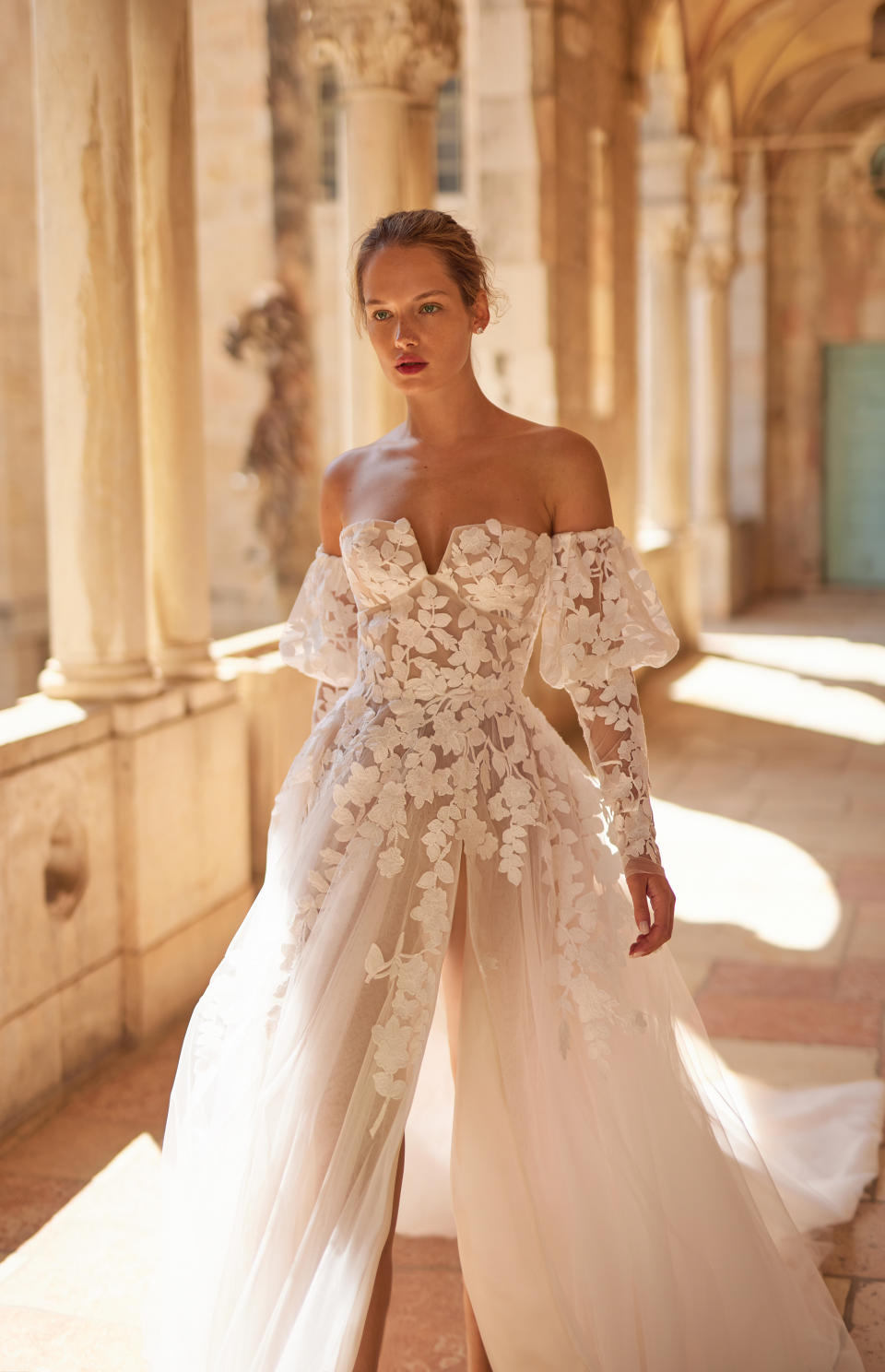
Many brands are trying to amp up sales globally, including Ines Di Santo, which is targeting Europe, Australia and Asia. The company recently ventured into Vietnam and will next head for Malaysia. To keep up with those developments, Ines Di Santo is expanding its manufacturing in Toronto.
After introducing bridal last year, Sally Lapointe said, “There is a heavy appetite for the type of assortment that we offer. I do not do traditional bridal. I have realized quickly that the customer is there — we call her the New Bride.”
The Atelier Couture is also branching out, having launched a ready-to-wear line and a second collection will only be available at its new stores in Kuala Lumpur and London, as well as one in Shanghai that bows this month. The most significant recent change is that many brides are shopping closer five to six months ahead of their nuptials versus a year beforehand, said CEO Yew Loh.
Best of WWD

